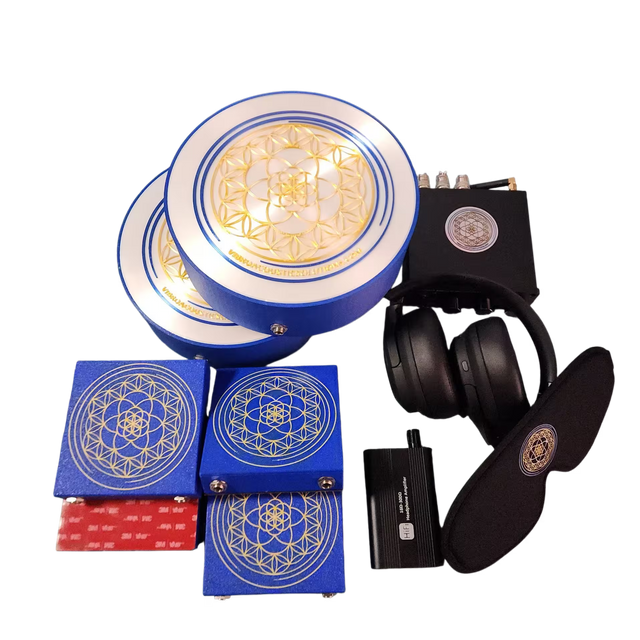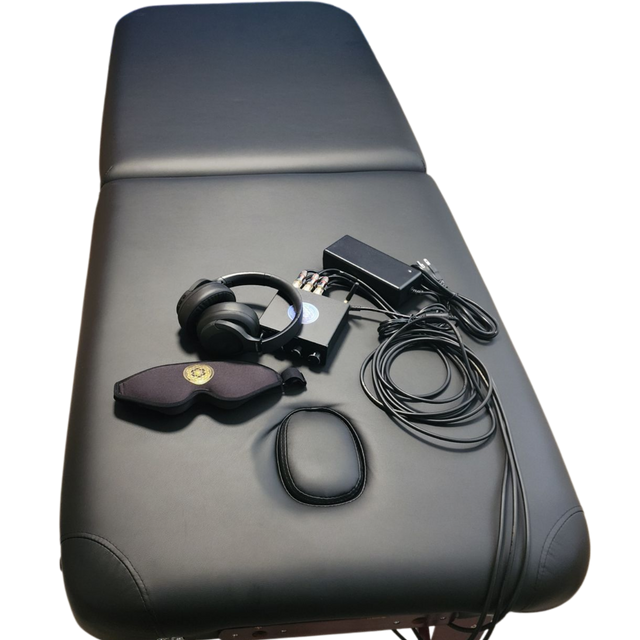Introduction to Vibroacoustic Therapy (VAT) and the 40 Hz Frequency
Vibroacoustic therapy (VAT) is a therapeutic approach that utilizes sound waves to create vibrations believed to have beneficial effects on the body. The 40 Hz frequency, within the gamma frequency band, has been extensively studied for its potential benefits in neurological conditions, pain management, and overall well-being. This article delves into the research surrounding 40 Hz vibroacoustic therapy, highlighting key studies, methodologies, and outcomes.
Research on 40 Hz Vibroacoustic Therapy
1. Long-Term Effects on Parkinson's Disease
A 2020 study investigated the long-term effects of 40 Hz physioacoustic vibrations on motor symptoms in Parkinson's disease (PD) patients. This randomized, double-blind, placebo-controlled trial involved 47 participants initially, with 21 in the treatment group and 15 in the placebo group completing the study.
- Participants: 36 (21 treatment, 15 placebo)
- Age: Mean 69.4 ± 9.5 years
- Duration of Research: 12 weeks
- Frequency of Sessions: Three times a week
- Equipment Used: Physioacoustic therapy system with six speakers
- Session Length: 25 minutes
- Results: Significant improvement in motor symptoms of PD, including tremor, rigidity, bradykinesia, and posture and gait measures1.
2. Pain Management
A 2022 scoping review explored the use of vibroacoustic therapy for pain management. While the review highlighted the heterogeneity in study protocols, 40 Hz was the most commonly used frequency. Sessions typically lasted between 20 to 45 minutes, with more frequent applications recommended for acute pain.
- Participants: Varied across studies
- Age and Gender: Not specified uniformly
- Duration of Sessions: 20 to 45 minutes
- Frequency of Sessions: Daily for acute pain, less frequent for chronic pain
- Equipment Used: Various vibroacoustic devices
- Results: Perceived pain reduction, though more research is needed7.
3. Alzheimer's Disease Research
A study by MIT scientists found that 40 Hz vibrations, when combined with light, significantly slowed the loss of myelin in volunteers with Alzheimer's. This research also demonstrated preservation of oligodendrocytes, sustained neural electrical performance, and reduced inflammation in mouse models.
- Participants: Mouse models
- Duration of Research: Several weeks
- Frequency of Sessions: Daily
- Equipment Used: Light and sound stimulation devices
- Results: Slowed myelin loss, preserved neural integrity3.
4. Mouse Models for Alzheimer's
Another study using mouse models showed that exposure to 40 Hz vibrations for an hour a day over several weeks improved brain health and reduced Alzheimer's pathology.
- Participants: Mouse models
- Duration of Research: Several weeks
- Frequency of Sessions: Daily
- Equipment Used: Vibration devices
- Results: Reduced Alzheimer's pathology3.
5. Short-Term Vibroacoustic Therapy Study
A study involving 53 patients aged 20-72 used 40 Hz vibroacoustic therapy once a day for 23 minutes over four or five days. While specific outcomes were not detailed, this study highlights the use of short-term VAT protocols.
- Participants: 53
- Age: 20-72 years
- Duration of Research: Four to five days
- Frequency of Sessions: Once a day
- Equipment Used: Vibroacoustic therapy system
- Session Length: 23 minutes.
6. Vibroacoustic Therapy for Fibromyalgia
In a study involving 19 fibromyalgia patients, participants received 23 minutes of 40 Hz sine wave stimulation twice a week for five weeks. After ten treatments, a quarter of the patients were off all pain medication, and the others had reduced pain medication. The group showed significant improvements in quality of life, sleep, depression, and mobility5.
- Participants: 19
- Age and Gender: Not specified
- Duration of Research: Five weeks
- Frequency of Sessions: Twice a week
- Equipment Used: Vibroacoustic therapy device
- Session Length: 23 minutes
- Results: Improved quality of life, reduced pain medication.
7. Vibroacoustic Therapy in Parkinsonian Patients
A study using a physioacoustic method with a 40 Hz frequency reported improvements in both rigidity and dyskinesia in PD patients. However, specific participant demographics and detailed outcomes were not provided in the search results.
- Participants: Not specified
- Age and Gender: Not specified
- Duration of Research: Not specified
- Frequency of Sessions: Not specified
- Equipment Used: Physioacoustic therapy system
- Results: Improved rigidity and dyskinesia in PD patients6.
Conditions Treated with 40 Hz Vibroacoustic Therapy
40 Hz vibroacoustic therapy has been explored for various conditions, including:
- Parkinson's Disease: Improvements in motor symptoms such as tremor, rigidity, bradykinesia, and posture and gait measures.
- Alzheimer's Disease: Potential benefits in slowing myelin loss and reducing disease pathology.
- Pain Management: Perceived pain reduction in both acute and chronic pain conditions.
- Fibromyalgia: Improved quality of life, reduced pain medication, and enhanced mobility.
Conclusion
Vibroacoustic therapy using the 40 Hz frequency has shown promising results in various therapeutic applications. While the current body of research is encouraging, more standardized and controlled studies are needed to fully understand the benefits and optimal treatment protocols for VAT. As technology advances and more research emerges, the potential of 40 Hz vibroacoustic therapy to improve health outcomes continues to grow.
References:
1 The Effects of Long-Term 40-Hz Physioacoustic Vibrations on Motor Symptoms of Parkinson’s Disease
2 Good vibrations: using sound to treat disease
3 Research & Clinical Studies on Vibroacoustic Therapy
5 Vibroacoustic Research for Fibromyalgia
6 Vibroacoustic Therapy in Parkinsonian Patients
7 Exploring Vibroacoustic Therapy in Adults Experiencing Pain





